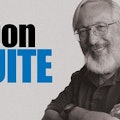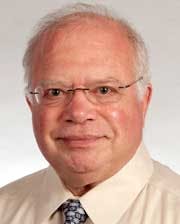The most conspicuous trend in both pure analog and mixed-signal ICs is the replacement of ad-hoc analog signal-conditioning circuitry in new designs with targeted analog front ends (AFEs) aimed at specific kinds of applications including medical, automotive, and industrial control contexts.
Traditionally, analog signal acquisition and processing was accomplished with chains of amplifiers and data converters created by the engineers at the companies that were designing the final product. IC companies competed on the basis of data-sheet specs and pricing, and their design support was limited to application notes and contributed articles in magazines such as Electronic Design.
This file type includes high resolution graphics and schematics when applicapable.
These days, most new product announcements concern highly integrated, narrowly targeted devices that encompass the entire analog signal chain from the first stage after the sensors themselves to the interface to an FPGA or microcontroller. Examples in applications range from electrocardiography and ultrasound to managing the charge and discharge of traction-motor batteries in electric vehicles.
Executives at Linear Technology recently met to discuss these trends. The roundtable included Robert Dobkin, chief technology officer; Bob Reay, vice president of mixed-signal products; Erik Soule, vice president of signal-conditioning products; and vice presidents Don Paulus, and Steve Pietkiewicz, who essentially split power-management products, Linear’s largest product line, between them.
Don Tuite: How does Linear manage discrete and integrated solutions?
Erik Soule: We do both. We’re making the turnkey micro modules and we’re making great standard products too that could be used in ways that we may not predict.
Tuite: Who is buying the standard products? Is there anybody typical?
Soule: I think the guy that tends to buy the standard product is the guy that’s pushing the performance barrier. So almost by definition, there is no integrated or ready-made solution for him because he has the best box on the planet.
We have one category of parts. Call them high-performance widgets. Whether it’s a switching power supply or an amplifier, it tends to be a building block. In the RF world, these are mixers or modulators, the kind of fundamental squares and triangles on your schematic that have really the best features or the best combinations of specs that you can get. The guy that knows his end product can cobble those things together in unique ways that allow him to differentiate.
Don Paulus: Like Erik said, the answer is it’s both. We’re doing these reference designs, the integrated modules, the ASSPs (application-specific standard parts)—those tend to be more, I think, application-specific, where we do all the hard stuff and build it inside. And then I think there are guys who go the complete opposite direction and take the widgets and do things with them.
Tuite: What is it about the guys who have the really trailblazing state-of-the-art end products—where do they find their customers? Where do they come from? Are they older people who have spun off from larger companies with a specialty? Do they just fall out of the sky?
Steve Pietkiewicz: No, they’re established companies. I think of these industrial, European, family-owned companies having been around for generations and generations. They’re not startups. They know what they’re doing. They’re leaders in whatever box they make. We see it in Europe. We see it in Asia and Japan. We see it here. These are companies that have been around for a long time. They make the best of whatever it is. They compete hard with whomever they compete against, and they tend to buy a lot of our products.
Paulus: But I think the guys are interested in more of a system-level solution being provided. And from my perspective, that’s a growing piece of our customer base, and it has become more of a focus inside LTC, certainly for certain products in my business.
The battery management system in general is probably the best example I can think of, because these are very sophisticated systems. These days, the balancers have to interact with the battery management system. And in order to use a balancer effectively, you need to develop an algorithm that will allow you to effectively balance the charge in both discharging or charging. The demonstration capability—the reference design, if you will—is an entire system including the algorithmic smarts to know how to use this thing effectively. That kind of a system-level approach to market is relatively new for the company.
Soule: That’s a really interesting example because that market didn’t exist 10 years ago. We used lithium-ion battery monitoring. And yet we were in a unique position because we had the data converter, the filtering, the references, the right type of logic and high voltage capability to put all those things together. But that was an example where because we had a lot of the discrete parts, we could make the ASSP. That thing is very application-specific. So that one was a market that was right for integration and we went after it. I wouldn’t say all markets are like that. Some of them remain discrete and probably will forever be discrete.
Paulus: But markets that are like that. They want us to do the hard stuff.
Soule: That’s right.
Paulus: So providing system-level algorithms and demonstration capabilities...
Soule: Software, yeah.
Paulus: That includes software and full battery emulators and so on. That’s a pretty new concept that I think is going to become more and more useful.
Pietkiewicz: That’s where growth is. Growth is a derivative, right? And if you look at what the business levels are in various pieces of Linear’s business, that’s not a huge number. It’s growing. There’s lots of interest. Lots of articles get written about it. But this broad industrial base, these old-line companies, is a much bigger piece of our business.
Robert Dobkin: And it’s still a growing piece of the business. There are only so many ASSPs that we can undertake to do where we know we’re going to have a return on it. Some of these things are 15 to 30 man-years in development, for development of a product plus the software to support it plus the application support. That better have a return. And it ought to be pretty clear to us that we can have a technical advantage in the marketplace that’ll make people turn to us. If we don’t have an advantage in the marketplace, then it’s a free-for-all on price.
So we looked at these things pretty carefully. We’re a high-performance supplier, and we continue to think of new higher-performance devices that people need. And then we go and enhance them to make them more useful to the engineering community, and we can get an advantage over the competing parts. We can charge money so it’s not a free-for-all on price, and we’ve got better products to go out there.
Tuite: So you’ve got the highest-performance discrete parts. But we’re also talking about custom parts for battery management. And so there’s a certain kind of smarts that a company has to have to do one and another kind of smarts that you have to have to do the other, because you weren’t born knowing about battery management.
Dobkin: We’re not doing customs. They’re ASSPs. The difference is, the customer comes to you and says, “Make this.” In our case, we set up the specs, we set up the timetable, and we make the part for the market, rather than having a customer come to us.
Paulus: But the application is very specific.
Pietkiewicz: Well, I guess you want to look for a long-term trend on who’s doing the design essentially.
Tuite: That’s another part of it. It’s the companies that you’re talking about. The old-line guys who really know what they’re doing are one set of customers. There’s another set of people who are popping up with maybe ideas that the CTO has had in his head for a long time, but they just never had the opportunity to get a crew together to make that into a reality. That’s one class of customer. The old guys that you were talking about are another class. And I’m trying to get an idea of whether there are any other types of customers.
Paulus: I think the biggest trend is people [companies] that can’t afford to have a bunch of analog people on staff like the big guys, outsource their. I was just at conference where half of the potential customers had good analog guys, and the other half didn’t. The ones that outsource it so come to LTC and say, “Look, you guys are the experts, and you figure out what the end product is.” They say, “We just want it done.”
There are actually customers who would be very happy to have us do the complete design for them, which we do a lot thanks to our FAEs. And there are other people who like to buy the whole thing.
And that’s what Erik’s doing. When we bought Dust [Dust Networks, a maker of wireless-sensor mesh networks that complements our energy-harvesting product line], which is a mesh network hardware and software technology, it was complete. It’s software; it’s an algorithm; it’s IP. It [Dust Networks] is an IT company. Customers expect an IT company to deliver the whole bill of goods, including the silicon.
So, there’s a lot of digital content that we’re doing. The performance that we get rewarded for is still on the analog side, but digital is required. You have to have software guys in the lab who are debugging stuff. In fact, one of the strengths of our power system management is the software that talks to this whole product portfolio that we have.
Tuite: The battery management stuff requires you to learn a great deal about battery technology. It’s not somebody coming to you asking specifically for that, but you finding that market. So, give me an idea how that works.
Dobkin: With the battery technology, we do have people coming to us. They want us to do the measurement. They want us to do some of the controls. But the big ones, they want to use their algorithm to control the battery. They don’t want us controlling the battery. So they’re talking to the battery manufacturer and they’re finding out what the battery manufacturer wants. Then they come to us and they say, “We need to do these measurements and these controls. Will your system do it?” And it will, and it’ll talk to their processor.
Soule: So that was kind of an interesting scenario, the battery. We were already working with one of the large tier 1 suppliers in Japan, and they were using a lot of our discreet building blocks. (That’s “tier 1” like in automotive speak.) So you have your OEM, the car companies’ tier 1, which is your equivalent of the Delphi type guys, and then you have independent design houses. I usually think about it in those three tiers.
And this was like the guy in the middle who classically in the automotive world has been responsible for bringing in the next generation of ABS or fuel injection drive or whatever it is. So he was putting together a battery management system, making the switch from nickel metal hydride to lithium, and he ran into a host of problems.
And I remember one day staring at this thing and going, “Wow, there’s a lot of things we could do if we roll up this all together.” It was like one of those conversations: “Well, what are you really trying to do?” And the conversation gets more interesting. So that’s how that went. It was because of the relationship we had. But let me follow along with that idea, since you’re asking a lot of questions about what types of customers there are and where they are.
With the electrification of the car, there are more and more subsystems that never existed even five years ago. We’ve seen that kind of food chain move around a little bit, and all the new technologies are not necessarily coming in through the tier 1 suppliers. For instance, a lot of them lately are becoming equivalent to the new engine of the car, so they’re more strategic. Now you see this drift away from the design houses and the tier 1 suppliers to the OEMs. The car companies are basically specifying what everybody’s going to have to do. So our sales team is scrambling because we’re trying to figure out, “Well, whom do I talk to?”
We joke that we have to win a design contest five times because you have to win over the car company; you have to win over the tier 1; and there are two design houses competing for the business. So it’s pretty dynamic, I would say, at least in the automotive environment. Who is the customer, and who actually originated the concept and is going to carry the design through to production?
Paulus: Especially in battery management.
Soule: Yeah, I’m just talking about battery management.
Paulus: For hybrid electric and electric vehicles.
Soule: Well, I think you could make the same argument around something like collision-avoidance radar. The milliwave radar is becoming much more strategic because of lane departure, automatic cruise control, and backup sensors. So, we actually saw a lot of tier 1 guys who used to specify that, and there are car companies now that are basically dictating the critical components to their tier 1 suppliers.
Dobkin: In terms of us supplying more than the parts, we have a 20-bit analog-to-digital converter. And that requires a lot of hand-holding and a lot of development on our part because if you just put that in, you’ll find out that your resistors are not 20-bit linear. And you’ll find that the nano-amp of leakage you have is going to mess up your 20 bits. So getting all the bits out is going through your mind. It requires a lot of hand-holding, a lot of expertise from us, because nobody’s had to go through that before, except maybe the makers of eight-digit volt meters. And it takes a lot of work on our part.
Pietkiewicz: It’s in the land of switching regulators, the venerable buck regulator, which there are just dozens or hundreds of in every car. Our customers ask us to solve more of their problems. And we’ve known for some years that a big problem is EMI (electromagnetic interference). And earlier this year we brought out the kind of technology we call silent switcher, which drops the radiated EMI down by 20 or 25 dB compared to our own previous designs. And that’s gotten a lot of attention because it makes our customer’s life easier. He doesn’t have to spend a week at the EMI lab.
Getting type approval—which is a pretty tough thing to do if you don’t do it right from the beginning—it’s hard to take something that fails and turn it into something that passes. So we’ve developed a lot of expertise in EMI, which is RF. We’ve got a bunch of RF parts, and we want to get the most RF possible out of them, and in my switching regulators I wanted to get the least RF possible out of them. And it turns out that the techniques are very similar. You get a lot of something and you get none of something. You have to know what’s going on.
Dobkin: From a manufacturer’s viewpoint, commodity managers are a real problem because we’re selling more than the part. But the commodity manager just wants the cheapest price on the part. Well, on a lot of these sophisticated systems, that doesn’t get your system working and running. But he’s only compensated on how much money he saves. And some of the parts that we make, we’ve been selling for 30 years. We can’t give them a 10% reduction for 30 years. It just doesn’t work that way. So we are fighting a war against commodity managers who don’t understand their own systems requirements and don’t understand that there is more to the system than just the chip they buy.
I think one of the things you can see from any of the companies is that the analog IC is just not the chip. It’s the system. Because we’re getting more complex, our competitors are getting more complex. The components or the systems are getting more complex. And, people don’t want to spend six months learning how to do it. They want to get their product out, so they’re going to rely more on the manufacturers.
Paulus: And as you pointed out earlier, you can’t get the performance the chips will offer unless you solve the system level problem—so, hence, the burden on the component guys.
Dobkin: So I think the market is seeing a shift to higher-performance analog requiring a lot more support.
Paulus: You can’t fiddle with it. In my opinion, customers would love it if they could get an FAE in a box, that you go to the website and you type in what you want and there’s some type of expert system that then gives you the bill of materials and the schematic that you just lay out. It’d be even great if it does layout. The problem is that actually getting that, with all the subtleties involved, is just impossible. You’ll never replace an FAE.
This file type includes high resolution graphics and schematics when applicapable.
About the Author

Don Tuite
Don Tuite (retired) writes about Analog and Power issues for Electronic Design’s magazine and website. He has a BSEE and an M.S in Technical Communication, and has worked for companies in aerospace, broadcasting, test equipment, semiconductors, publishing, and media relations, focusing on developing insights that link technology, business, and communications. Don is also a ham radio operator (NR7X), private pilot, and motorcycle rider, and he’s not half bad on the 5-string banjo.





